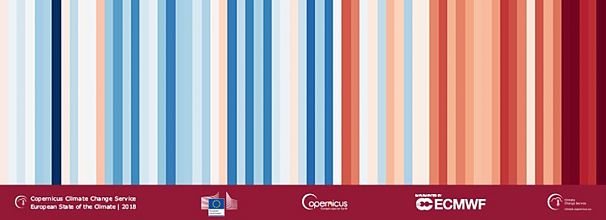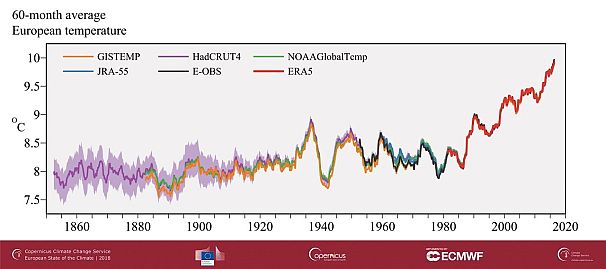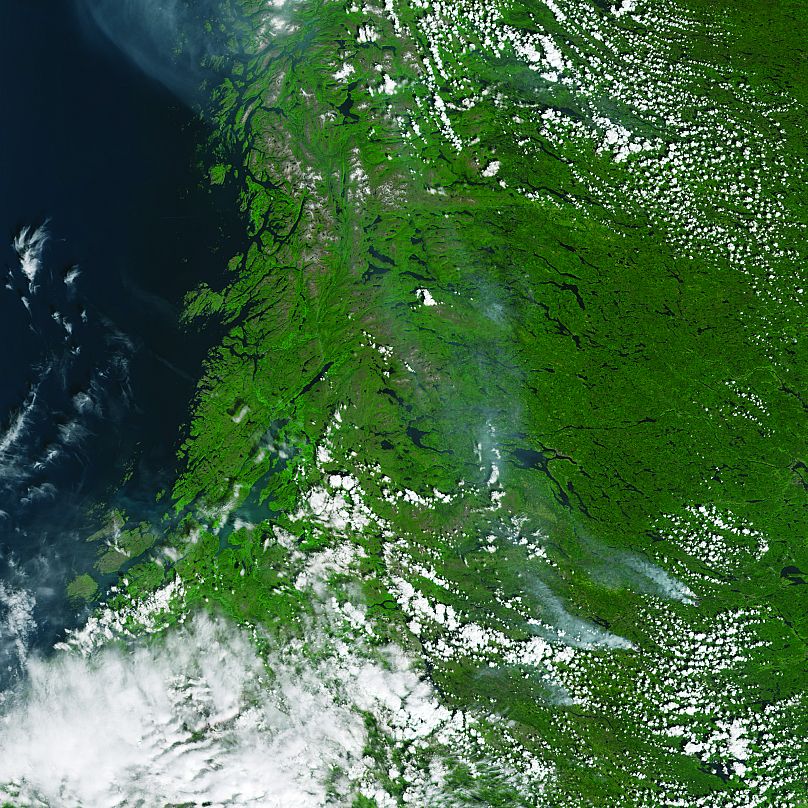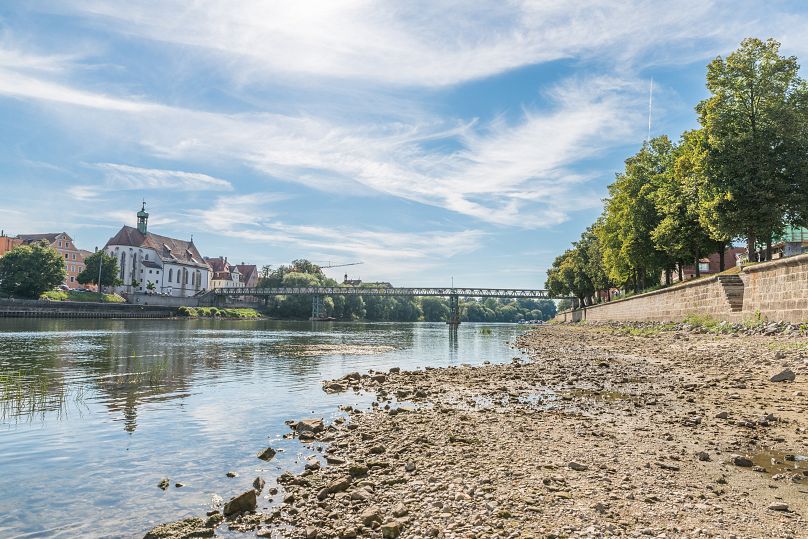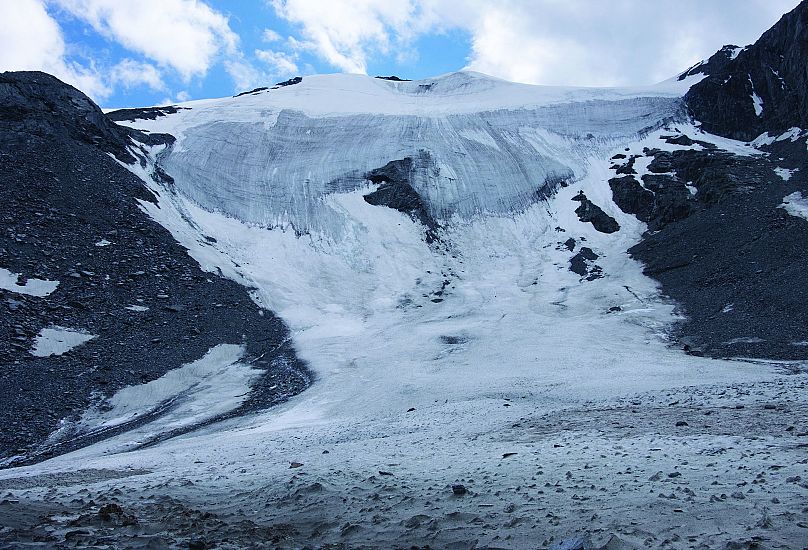Cold start and record snow, long heatwaves, drought, wildfires, floods, storms, worrying Arctic sea and Alpine glaciers ice melt: the recently released report from Copernicus Climate Change Service (C3S) highlights clear climate change trends as well as long-lasting uneven extreme weather patterns throughout the continent.
Overall temperatures in Europe: the heat is on
Temperatures in Europe have been trending towards warmer weather over the past four decades and the Copernicus European State of the Climate 2018 confirms that last year’s temperature in Europe was one of the three highest on record. The year was warm overall with temperatures running 1.2°C higher than usual, but last spring to summer was the ultimate scorcher, literally: it was exceptionally warm in central Europe with temperatures in many areas up to 3°C above average.
Compared to the pre-industrial era, temperature over Europe increased fairly steadily during most of the industrial era, but then rose sharply from the 1980s. The 60-month average values reach 9.9°C for periods ending in the second half of 2018. This is almost 2°C higher than values for the latter half of the 19th century.
Persistent extreme weather patterns impacting European economy and citizens’ daily lives
The C3S European State of the Climate 2018 provides valuable data that enables solid conclusions to be drawn about a rapidly advancing problem. While the data demonstrate clear patterns - for example increasing levels of greenhouse gases in the atmosphere - it also highlights how Europeans experienced various extreme weather patterns in 2018 with periods of biting cold or record-breaking heatwaves and droughts, followed by a hurricane or a flood. The details depend on where in Europe you go, but one thing is the same everywhere: long-lasting extreme weather episodes impact our way of life.
A long spell of cold weather marked the beginning of the year, as the chills and snowfall of February and March were the only time European temperatures were below average last year. The summer more than made up for that, with higher-than-normal temperatures from April through the rest of the year. From here, it’s a tale of two extremes: southern Europe was far wetter than normal, but in the north, 2018 was unusually hot and dry. Central Europe experienced hot temperatures not seen since the 1950s, and central and northern Europe saw less than 80% of normal rainfall for spring, summer and autumn. Germany in particular saw an unusual amount of rays, with some areas of central and northern Europe experiencing up to 40% more sunshine hours than average.
How climate data are read matters: the average rainfall for Europe might look normal when seen as a whole, but when broken down by region, the extremes appear. This is also what’s felt on the ground: for example Scandinavia experienced some of the most extreme wildfires in modern history, while Hurricane Leslie hit the Iberian Peninsula in October with a severity not seen in a storm since 1842.
Unusually high temperatures coupled to lack of rain also led to water restrictions and low water levels in rivers, which impacted shipping. At its lowest, 36% of European rivers were in low flow - last summer people could walk out to the middle of the River Danube for the first time in over a decade. Lack of rain also led to agricultural losses, compounded by the problem of moisture having steadily escaped from the soil over the past 40 years as temperatures have risen.
Ice melt, a major concern in the Alps and in the Arctic
A sunny spring and summer is a threat to snow coverage in the mountains, and 2018 saw extreme mass loss in the Alpine reference glaciers. Since 1997, glaciers in Europe have lost between 8 and 25 metres in mass, with an average loss of 16 tonnes of freshwater per square meter.
Sea ice in the European Arctic has also declined due to rising temperatures - in this area, the first two months of the year were over 4°C warmer than the long-term average. While Arctic sea ice cover has been on a steady downward trend since the year 2000, the summer of 2018 saw sea ice cover in the European sector of the Arctic dropping to an alarming 30% below the long-term average. Satellites brought back startling data and images: for the first time in winter time since observations began, the ice cover usually found in an area north of Greenland gave way to a region of open water, caused by warm air and strong winds.
The European State of the Climate 2018: a major tool placing the year of 2018 in the long-term climate context
Now in its fifth year, the European Union’s flagship Earth observation programme, Copernicus, delivers an unprecedented quantity of environmental data which backs public policy and a growing knowledge-based economy. Coupled with exhaustive free and user-friendly data sets from the Climate Data Store, the European State of Climate 2018 offers valuable insights for many sectors which impact society including agriculture, health, insurance, security, tourism and urban and regional planning.
“The reliable Earth observation data contained in the European State of the Climate plays a vital role in understanding the state of our planet,” said Juan Garces de Marcilla, Director of Copernicus Services at the European Centre for Medium-Range Weather Forecasts (ECMWF), which will be implementing the report. “[The European State of the Climate2018 ] provides a valuable insight to policy makers, organisations and businesses to help plan for the future for the benefit of all citizens in Europe and beyond.”
Ultimately, the European State of the Climate 2018 aims to increase understanding of how climate change data connect with the lived experience of people in Europe and beyond. This understanding is a vital link, as only with the proper understanding can we create the necessary motivation, and ultimately dedicate the resources necessary to save ourselves.


